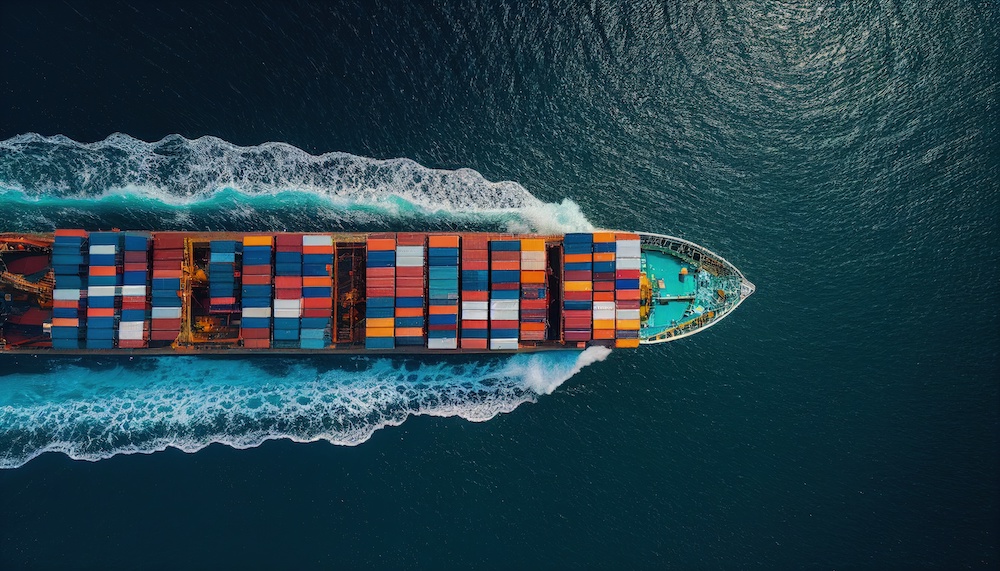 David Jinks Head of Consumer Research, ParcelHero
David Jinks Head of Consumer Research, ParcelHero

Many freight operators will view 2023 as year to forget, a period which saw the demise of names as old as, well, Knights of Old. However, there were opportunities for growth that some logistics operators seized gratefully.
The bad news is that 2024 looks set to be a similar year for transport companies of all sizes – if the recent Office for Budget Responsibility’s somewhat pessimistic assessment of the UK’s economic future proves accurate. However, the good news is that there are certainly a healthy number of growth areas to concentrate on, to maximise potential opportunities.
Freight companies must be agile as markets settle down to a new post-Covid normal.
What’s hot:
Belt tightening – 2024 will be a year of thrift for freight operators. An Office for National Statistics (ONS) Business Insights report released in November revealed that just 16.6 per cent of transport and warehouse operators expect to see their turnover increase towards the end of the year and beyond. More, 18.8 per cent, think their turnover will actually decrease, while the majority (54 per cent) believe it will stay the same. It doesn’t look like increasing rates is the answer. Just five per cent of freight operators plan an increase in charges, two per cent plan an actual decrease, while a whopping 74 per cent plan to hold their prices where they are entering 2024.
Newer operators snaffling market share – When Shift, a logistics technology business run by a 29-year-old entrepreneur, swooped on parts of Tuffnells Parcel Express in summer 2023, it was a portent of things to come. The familiar green Tuffnells’ trucks were part of a history dating back to 1914, when Harold Tuffnell bought a horse and cart and began delivering goods. New players are set to make further gains across the freight market, and particularly in the parcels industry. The big winner will be Amazon Logistics, which has already captured 17 per cent of the UK parcel market and 22 per cent of the US market, even delivering for rival retailers who don’t use its marketplace. The parcel industry is in a state of upheaval and it is traditional players who will lose out.
The growth of same-day deliveries – ParcelHero’s latest research reveals 58 per cent of online shoppers believe same-day delivery options are important; up from 56 per cent last year and just 33 per cent in 2020. That requires a new approach to retailers’ supply chains and logistics providers' distribution centre (DC) network. Same-day and next-day timed deliveries need smaller regional DCs and micro-hubs, whether businesses have a huge range of SKUs or just a few products.
The growth of micro hubs – The impact of Covid and growing importance of same-day deliveries (see above!) has transformed supply chains, switching the emphasis from mega DCs to smaller micro-hubs. Amazon, for example, has now launched a major expansion of the number of goods it offers for same-day deliveries. In the US it has achieved this by opening many more same-day facilities. These smaller fulfilment centres are situated near large cities in order to quickly deliver the most popular items in the company’s range. More than 150 of these facilities will be opened in the next few years. These smaller same-day facilities are also likely to be the focus of Amazon’s UK approach to warehousing and distribution in future. Other British retailers, such as ASOS and Argos, are also upping their game on same-day deliveries.
What’s not:
Global freight growth – The global freight market is likely to remain stable at best going into 2024, reflecting the lacklustre state of international trade. For air freight, demand remains relatively low relative to capacity for most markets. Capacity is generally available globally, with few exceptions. In terms of maritime freight, overall vessel capacity continues to trend higher than demand, keeping rates low. As such, shipping lines will continue voiding sailings and slow steaming. The EU is set to implement a carbon tax system called the Emissions Trading System (ETS) that will apply across the delivery industry from January 2024. Ocean carriers are cautioning that ETS will significantly increase their costs, which are likely to be passed on to cargo owners.
Massive warehouse expansion – The era of big DC construction to support online growth is over. However, expect to see smaller, local hubs springing up where they can be used to recharge electric vehicles for last-mile deliveries. The one big growth area may be in the government’s new freeport economic zones, such as Freeport East. Tax breaks and other incentives could fuel new DCs in these locations.
Droids and drones – Yes, yes, yes. We’ve all heard Amazon’s plans for a drone delivery service in the UK in 2024. But if it’s a UK-wide service I’ll eat my hat – especially if it’s been delivered by drone. A market for drones to deliver specific items, such as medical supplies, to targeted locations does exist. However, the technology is not developed enough for urban drone deliveries to become an everyday occurrence. And even Amazon has ‘paused’ testing its Scout home delivery robot as it continues to slash costs. This year, it will be down to tech pioneers Starship Technologies to push the cause of delivery droids in the UK.
Home food deliveries – The food delivery market has a bad case of indigestion. Online food sales fell by -13 per cent year-on-year in 2022 as people returned to restaurants and fast-food outlets. Services such as London’s Jiffy rapid grocery deliveries closed in 2022, while the likes of Bother, Oja and Gorillas have also disappeared. The only growth area may be local supermarket tie-ins, such as Sainsbury’s-Just Eat’s new joint venture, where the logistics makes sense.
So that’s the pick of the freight market’s winning and losing trends for 2024. Issues such as the Panama Canal drought will also continue to loom for international freight – with further limits on transits set for the New Year. However, there are areas for growth, particularly around same-day operations for e-commerce customers. In all, 2024 is likely to be another year of ‘steady as she goes’ for most operators!